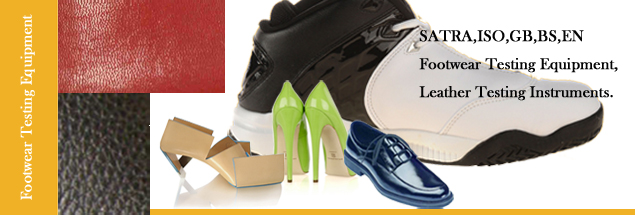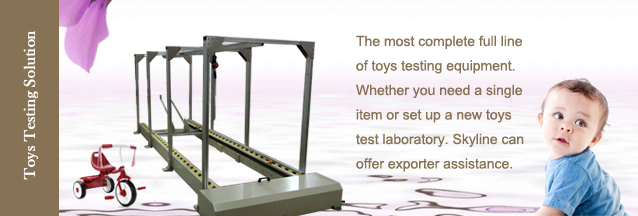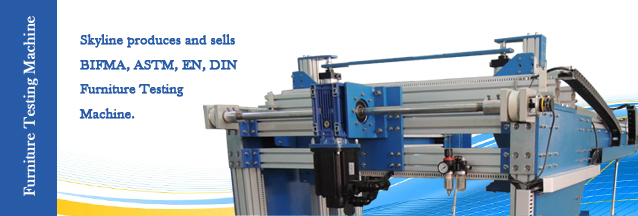 Toys Testing Equipment
Toys Testing Equipment Footwear Testing Equipment
Footwear Testing Equipment Tensile Testing Machine
Tensile Testing Machine Environmental Test Chamber
Environmental Test Chamber Building Material Flammability Test Equipment
Building Material Flammability Test Equipment Paper Testing Equipment
Paper Testing Equipment Spectacle Frames Testing Equipment
Spectacle Frames Testing Equipment Oil Analysis Testing Equipment
Oil Analysis Testing Equipment Lab Test Equipment
Lab Test Equipment Electronic Testing Equipment
Electronic Testing Equipment Stationery Testing Equipment
Stationery Testing Equipment Flammability Test Equipment
Flammability Test Equipment Furniture Testing Machine
Furniture Testing Machine Textile Testing Equipment
Textile Testing Equipment
 How to evaluate the corrosion resistance of lubricating grease?
How to evaluate the corrosion resistance of lubricating grease? - 2026/1/2
- How to evaluate the corrosion resistance of lubricating grease? A comprehensive guide to lubricating grease corrosion resistance testing and professional testing equipment. A tiny corrosion spot in...
 The Hong Kong fire once again rings the alarm: How can laboratories build a safety defense line for building materials through combustion tests?
The Hong Kong fire once again rings the alarm: How can laboratories build a safety defense line for building materials through combustion tests?- 2025/12/25
- The Hong Kong fire once again rings the alarm: How can laboratories build a safety defense line for building materials through combustion tests? The recent serious fire accident in Hong Kong has s...
 The Indian furniture inspection market welcomes new regulations!
The Indian furniture inspection market welcomes new regulations!- 2025/11/28
- The Indian furniture inspection market welcomes new regulations! The demand for these testing instruments will soar in 2026. New regulations in India are about to come into effect, and furniture insp...
- More>
Updated Safety Standard EN1888-2:2018+A1-2022 Introduces Key Changes
In a significant development for the safety of children's products, the European Committee for Standardization (CEN) has announced the introduction of several crucial changes to the existing safety standard EN1888-2:2018+A1-2022. This update aims to enhance the safety features of baby strollers and prams, ensuring improved protection for infants and toddlers.
The EN1888-2:2018+A1-2022 standard, originally established in 2018, set the guidelines and requirements for the safety of wheeled child conveyances. The recent revision builds upon the existing framework by incorporating valuable advancements in safety technology and addressing emerging concerns in the industry.
Here are the key changes introduced in the updated EN1888-2:2018+A1-2022 standard:
Enhanced Stability Testing: The new standard mandates more stringent stability testing procedures. Manufacturers are required to ensure that strollers and prams exhibit exceptional stability under various conditions, including uneven surfaces and sudden changes in direction.
Improved Restraint Systems: The updated standard emphasizes the importance of secure and reliable restraint systems. It sets stricter requirements for harnesses, seat belts, and other restraining mechanisms to prevent infants from unintentionally coming out of the stroller or pram.
Heightened Durability and Robustness: Recognizing the need for durable and long-lasting products, the revised standard introduces more rigorous durability tests. Strollers and prams must now undergo additional assessments to ensure they can withstand prolonged use and maintain their structural integrity.
Expanded Protection against Finger Entrapment: To safeguard children from potential finger entrapment hazards, the EN1888-2:2018+A1-2022 standard now includes improved guidelines to minimize the risk of fingers being caught or pinched in moving parts or hinges.
Clearer Warning Labeling: The updated standard emphasizes the importance of clear and concise warning labels. Manufacturers are required to provide prominent labels, highlighting potential hazards and instructions for safe usage, to ensure caregivers are well-informed about potential risks.
Inclusion of Chemical Safety: Recognizing the significance of chemical safety in children's products, the revised standard incorporates stricter requirements for materials and finishes used in strollers and prams. This includes limitations on the presence of hazardous substances, such as phthalates and heavy metals.
The CEN, in collaboration with industry experts, conducted extensive research and testing to develop these amendments to the EN1888-2:2018+A1-2022 standard. The objective is to offer parents and caregivers increased peace of mind when using baby strollers and prams, while also providing manufacturers with comprehensive guidelines to ensure their products meet the highest safety standards.
The revised EN1888-2:2018+A1-2022 standard is expected to be adopted by manufacturers, retailers, and regulatory bodies across Europe in the coming months. Compliance with these updated safety requirements will be critical for companies aiming to provide safe and reliable products in the marketplace.
Parents and caregivers are encouraged to stay informed about these changes and consider the updated EN1888-2:2018+A1-2022 standard when purchasing or using baby strollers and prams to ensure the well-being of their children.
The implementation of these crucial safety measures underscores the industry's commitment to continuously improving child safety and will undoubtedly contribute to a safer environment for infants and toddlers using wheeled child conveyances.
- ·New type Crockmeter- Manual Is Newly Released!
- ·Chinese New Year's Holiday!
- ·Skyline Instruments to SASO Installing and Training with a perfect Ending
- ·2014 New Design Toys 2m/s. Dynamic Strength Tester
- ·In 2014, the latest launched Caster and Chair Base Durability Tester
- ·The Blockbuster Launched Chair Stability Tester

 Toys Testing Equipment
Toys Testing Equipment Footwear Testing Equipment
Footwear Testing Equipment Tensile Testing Machine
Tensile Testing Machine Environmental Test Chamber
Environmental Test Chamber Building Material Flammability Test Equipment
Building Material Flammability Test Equipment Paper Testing Equipment
Paper Testing Equipment Spectacle Frames Testing Equipment
Spectacle Frames Testing Equipment Oil Analysis Testing Equipment
Oil Analysis Testing Equipment Lab Test Equipment
Lab Test Equipment Electronic Testing Equipment
Electronic Testing Equipment Stationery Testing Equipment
Stationery Testing Equipment Flammability Test Equipment
Flammability Test Equipment Furniture Testing Machine
Furniture Testing Machine Textile Testing Equipment
Textile Testing Equipment

 English
English 中文
中文 Español
Español française
française العربية
العربية Русский
Русский







